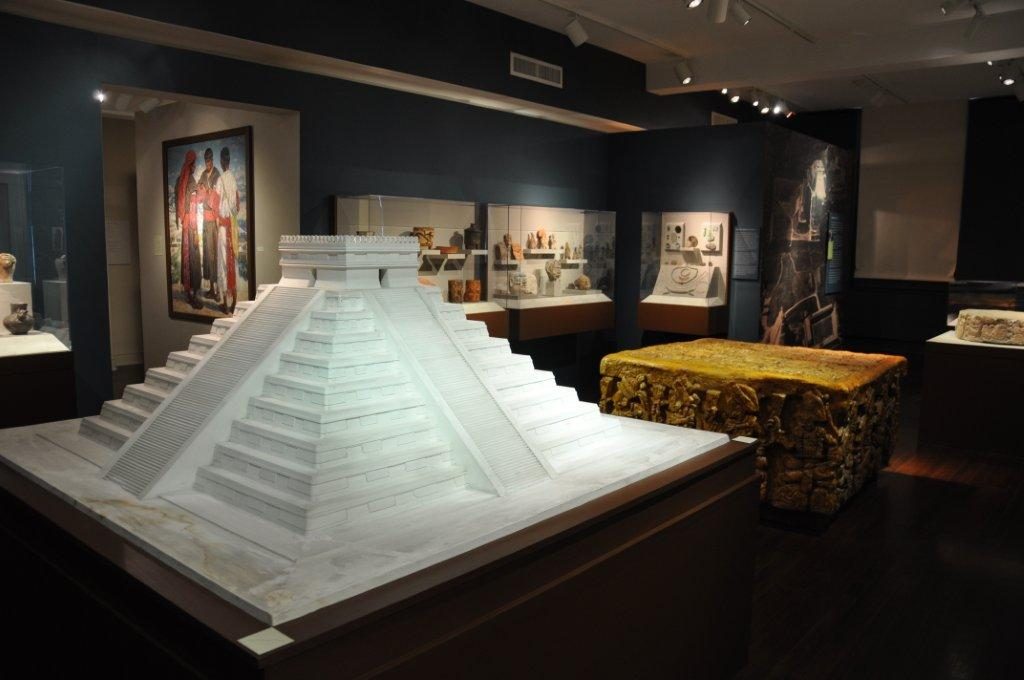On our evening walks around Uptown New Orleans, we’ve discovered one the best places to take rambunctious kids is Tulane University. We get a little bit of exercise walking there, and they get to jump out as soon as we reach the university and let loose. It’s the perfect place to hunt for cicadas and stick bugs, climb in the rock garden, play in the fountains and chase the stray cats that seem to thrive on campus.
| Carved Stone Head |
As part of our routine, we stop in the Anthropology building for a water and bathroom break and to peak in the main office at the fascinating decorated skeleton occupying the corner chair. During the recent hype over the end of the Maya calendar, a Times-Picayune article came out about a Maya exhibit in this very building we so often frequented. “Faces of the Maya: Profiles in Continuity and Resilience” was hidden two floors above us in Dinwiddie Hall’s Middle American Research Institute.
Normally only open Tuesday through Friday, 10 a.m. to 3 p.m., the museum was fairly inaccessible to us. However, on our latest walk across campus, we decided to ascend the steps to the third floor to maybe catch a glimpse of the exhibit through the window. Luckily, the Institute Director Marcello Canuto must have heard all the ruckus we were making outside his office, and upon discovering what we were up to, gladly opened the museum for us.
It was quite an amazing display depicting the Maya culture, from carved figurines and pottery examples to delicate jewelry and ballgame rubbings. The story of the Maya is intertwined with the artifacts, leading the viewer through the civilization’s earliest existence to today’s descendants who still live throughout southern Mexico, Guatemala, Belize and Honduras.
| Plaster Cast from Palenque God House |
The kids were drawn to a plaster model of El Castillo, a scaled-down version of a Maya temple-pyramid with a series of steps perfectly sized for the butterfly that we had picked up on today’s outing. An accompanying description explained that when the sun hits the platform during the equinox, snakes appear to slither down the pyramid–a sight I can only imagine to be awe-inspiring.
Nearby, I was drawn to a plaster cast of an altar so intricately detailed I could have spent hours staring at it. Alas, as I looked up, the kids were already out the door and headed down the stairs. I briefly stopped one last time to admire a vibrant painting of three Maya men seemingly deep in discussion before darting out the door and shouting a quick “thanks” to Director Canuto.
| Painting of the Maya |

